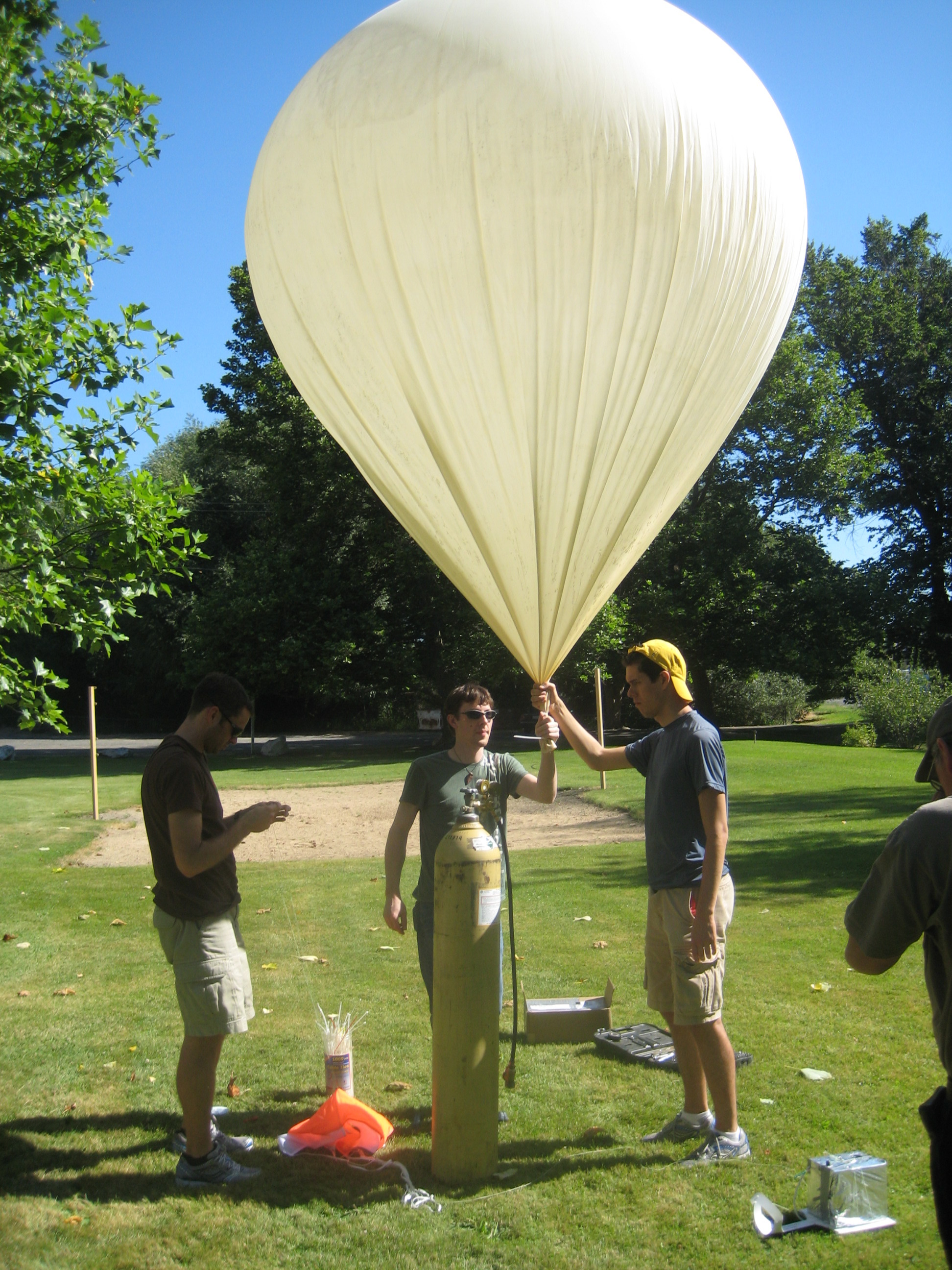Launch a near-space balloon
Build and launch a small high-altitude weather balloon model with a lightweight camera and tracker, under adult supervision, while learning about atmosphere and data collection.



Step-by-step guide to launch a near-space balloon
How to Launch a Weather Balloon to the Edge of Space: STEM Project Guide
Step 1
Gather all the materials and bring them to a clean workspace.
Step 2
Cut and shape the foam or lightweight container to make a snug box for your equipment.
Step 3
Place the camera and the GPS tracker inside the box so both fit securely.
Step 4
Add soft padding and close the box securely with tape.
Step 5
Attach the parachute to the top of the box using string tied in several strong knots.
Step 6
Tie the balloon shroud lines to the parachute lines so the balloon will lift the payload evenly.
Step 7
Weigh the finished payload on the small digital scale.
Step 8
Write down the payload mass so you know how much lift you need.
Step 9
Ask an adult to calculate the helium volume needed and to prepare the helium tank.
Step 10
Have the adult fill the balloon with helium until it provides the required lift and seal the neck safely.
Step 11
Securely tie the filled balloon to the payload rigging with a strong knot and tape.
Step 12
Turn on the camera and the GPS tracker and check that each powers up.
Step 13
With an adult, check the weather and pick a large open launch site away from airports and power lines.
Step 14
With an adult, release the balloon and watch while tracking the GPS signal so you can follow its flight and descent.
Step 15
Use the tracker with an adult to find and recover your payload and then share your finished creation and what you learned on DIY.org.
Final steps
You're almost there! Complete all the steps, bring your creation to life, post it, and conquer the challenge!


Help!?
What can we use instead of the foam or lightweight container if we can't find it?
If craft foam is hard to find, use a sturdy foam board or a small cardboard box reinforced with tape as the lightweight container when you cut and shape the snug box for your equipment.
What should we do if the camera or GPS tracker won't power up during the 'turn on the camera and the GPS tracker' step?
If the camera or GPS tracker won't power up, check that fresh batteries or a charged battery pack are installed, confirm the devices are seated correctly inside the foam box, and test the power switches before you close and tape the box.
How can we change the activity for younger kids or make it more challenging for teens?
For younger children, let them decorate the foam box and add soft padding while an adult handles helium filling and knot-tying, and for older kids, have them weigh the payload on the small digital scale, record the payload mass, and help track the GPS signal during flight under supervision.
How can we extend or personalize the near-space balloon project after we recover the payload?
To enhance the project, add a lightweight sensor like a temperature logger inside the foam box, mount a second camera for a different angle, personalize the parachute with paint or fabric, and create a flight log comparing the recorded payload mass from the digital scale with the recovered flight data to share on DIY.org.
Watch videos on how to launch a near-space balloon
How to Make a Self-Inflating Balloon | Simple Science Experiments for Children | Twinkl
Facts about high-altitude ballooning and atmospheric science
🧪 As a balloon rises the gas expands a lot—small launch sizes can swell until the balloon bursts at high altitude.
🎈 High-altitude balloons commonly reach 20–35 km (65,000–115,000 ft), where the sky looks very dark and thin!
📡 Many hobby launches use GPS trackers and APRS radio so teams can follow and recover the payload after landing.
🌤️ Radiosondes on weather balloons measure temperature, pressure, and humidity to help meteorologists forecast weather.
📷 Tiny lightweight cameras on near-space balloons can capture the curvature of Earth and stunning sunrise/sunset photos.
How do I build and launch a near-space weather balloon with my child?
What materials and equipment are needed to launch a small high-altitude weather balloon?
What ages is this near-space balloon project suitable for?
What safety and legal considerations should we know before launching a near-space balloon?


One subscription, many ways to play and learn.
Only $6.99 after trial. No credit card required



